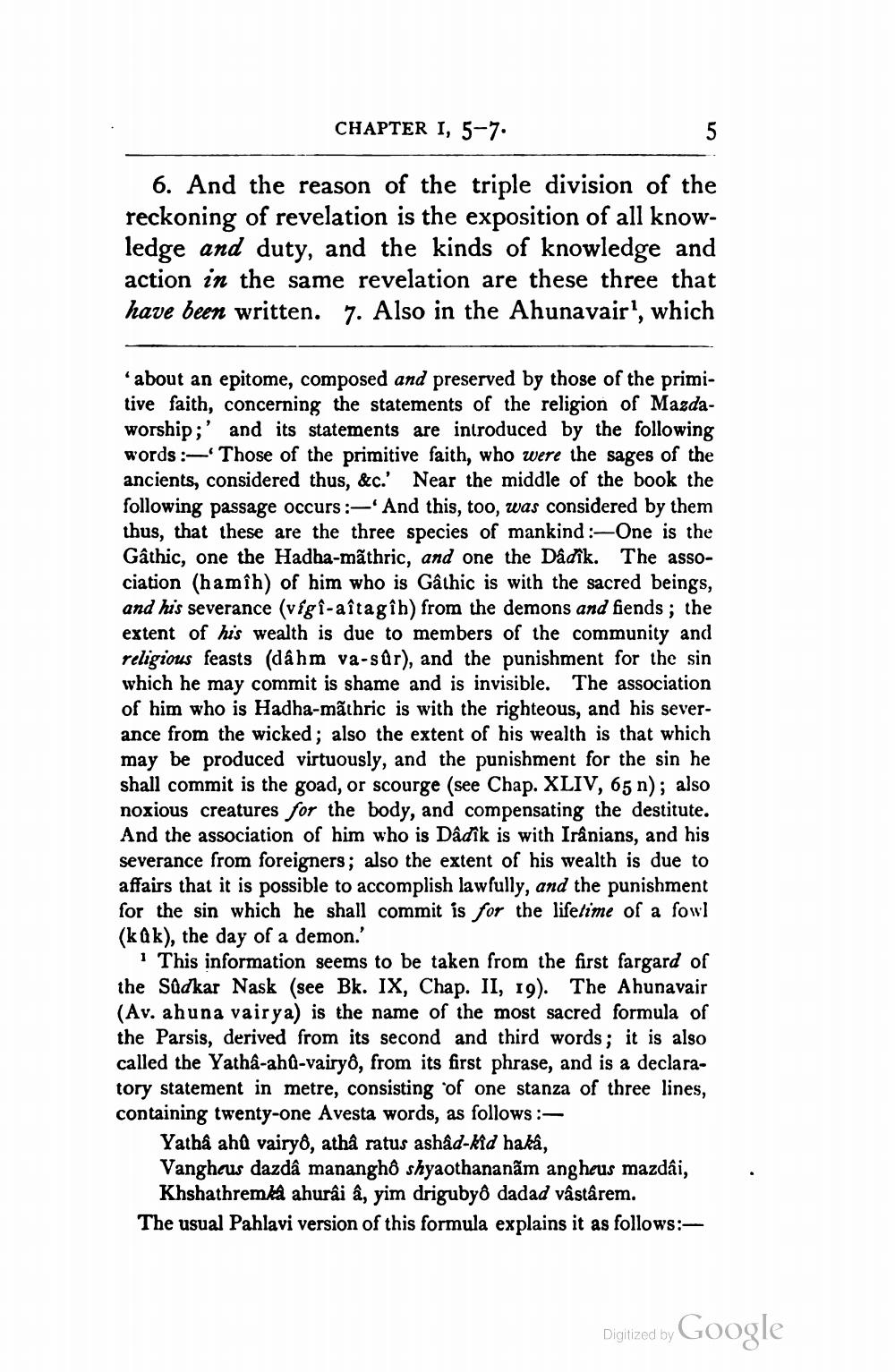________________
CHAPTER I, 5-7.
6. And the reason of the triple division of the reckoning of revelation is the exposition of all knowledge and duty, and the kinds of knowledge and action in the same revelation are these three that have been written. 7. Also in the Ahunavair', which
about an epitome, composed and preserved by those of the primitive faith, concerning the statements of the religion of Mazdaworship;' and its statements are introduced by the following words :- Those of the primitive faith, who were the sages of the ancients, considered thus, &c.' Near the middle of the book the following passage occurs :- And this, too, was considered by them thus, that these are the three species of mankind :-One is the Gâthic, one the Hadha-mãthric, and one the Dadîk. The association (hamih) of him who is Gâthic is with the sacred beings, and his severance (vigi-aitagih) from the demons and fiends; the extent of his wealth is due to members of the community and religious feasts (da hm va-sûr), and the punishment for the sin which he may commit is shame and is invisible. The association of him who is Hadha-mãthric is with the righteous, and his severance from the wicked; also the extent of his wealth is that which may be produced virtuously, and the punishment for the sin he shall commit is the goad, or scourge (see Chap. XLIV, 65 n); also noxious creatures for the body, and compensating the destitute. And the association of him who is Dadik is with Iranians, and his severance from foreigners; also the extent of his wealth is due to affairs that it is possible to accomplish lawfully, and the punishment for the sin which he shall commit is for the lifetime of a fowl (kak), the day of a demon.'
This information seems to be taken from the first fargard of the Sadkar Nask (see Bk. IX, Chap. II, 19). The Ahunavair (Av. ahuna vairya) is the name of the most sacred formula of the Parsis, derived from its second and third words; it is also called the Yatha-ahû-vairyô, from its first phrase, and is a declaratory statement in metre, consisting of one stanza of three lines, containing twenty-one Avesta words, as follows:
Yatha ahû vairyo, athâ ratus ashâd-kid haka, Vangheus dazda mananghô shyaothananãm angheus mazdai, Khshathremka ahurai â, yim drigubyô dadad vâstârem. The usual Pahlavi version of this formula explains it as follows:
Digitized by Google




